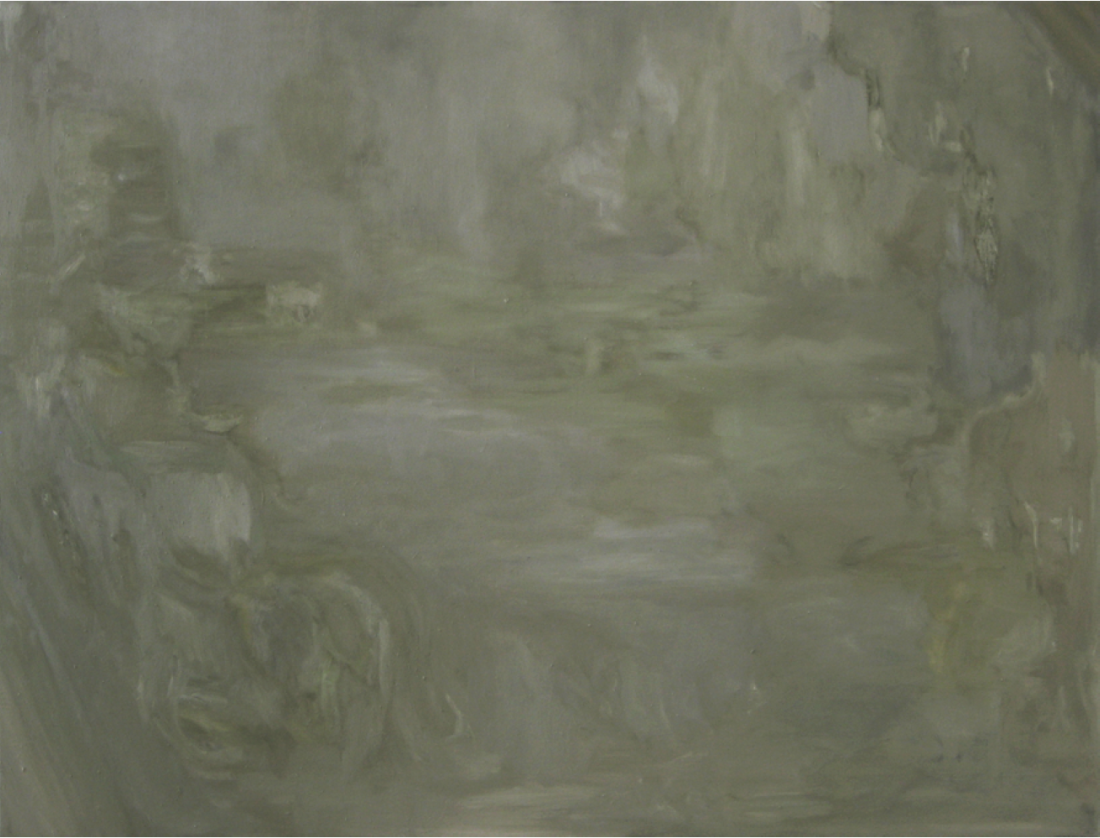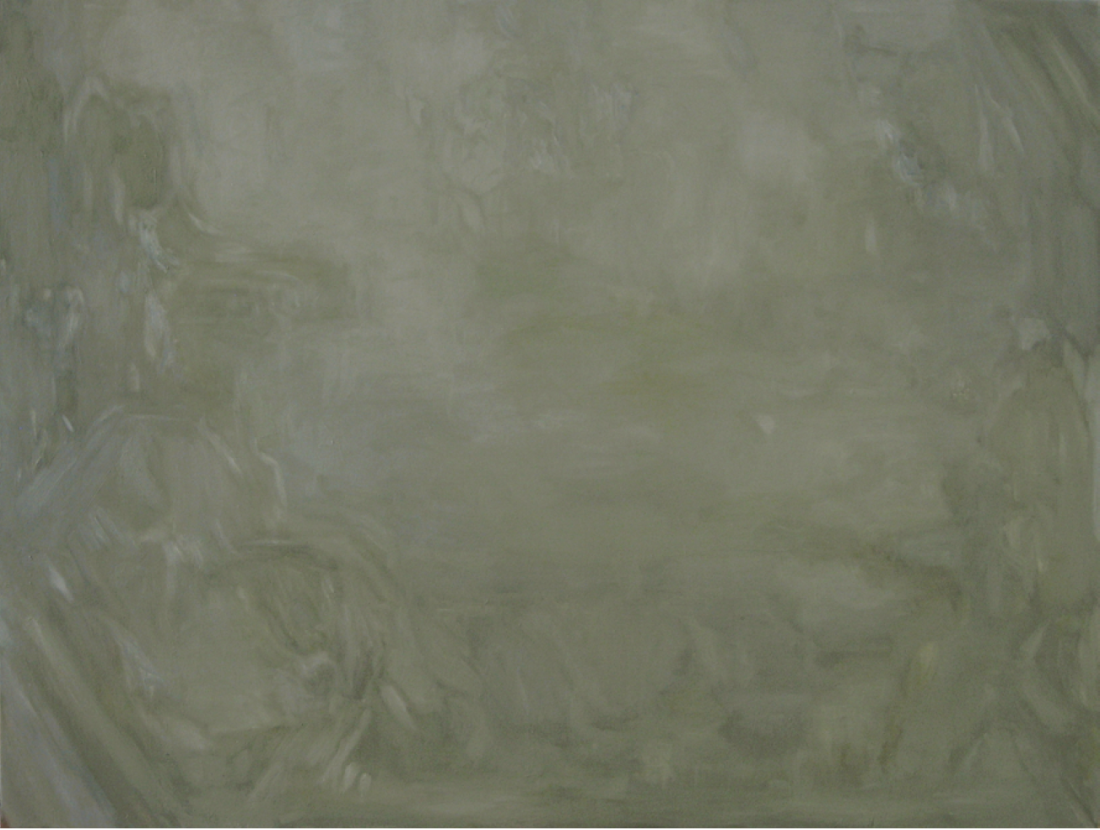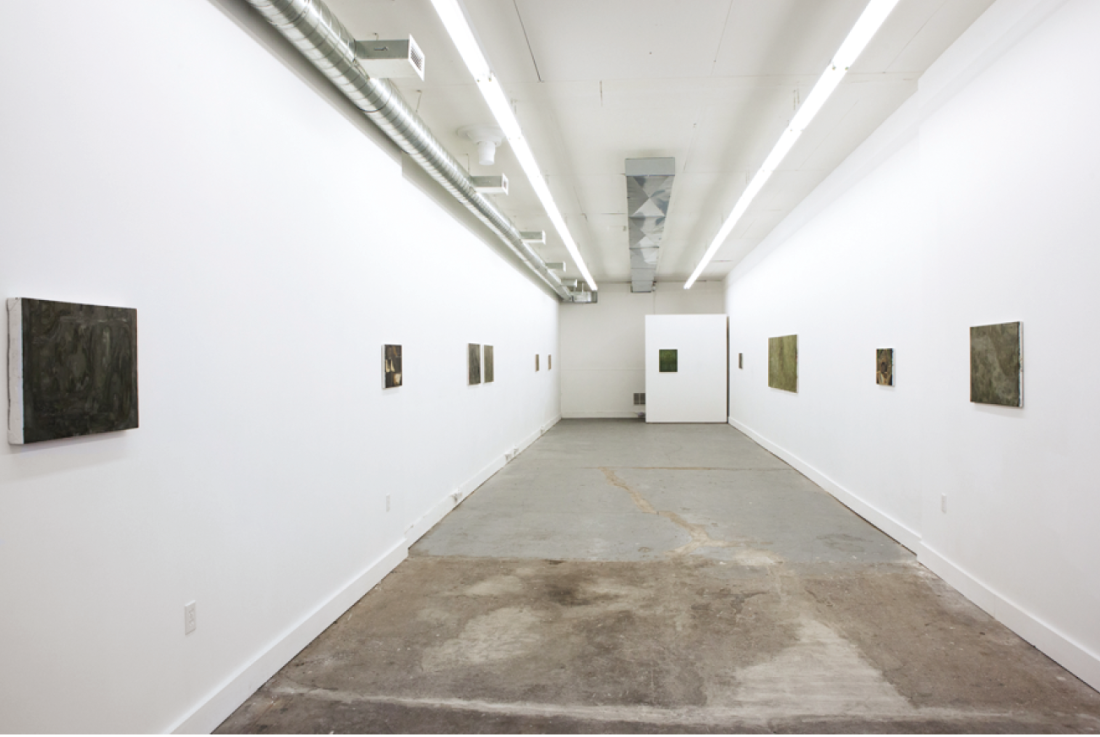Gordon Peterson
Mannerism marked a shift in Western European art away from striving towards a pictorial idiom that could imbue the symbolic register of Christian theology with a corporeal and thus politically communicative form into a revelling in form itself. Rather than searching for ways to make the stories of the Resurrection, the Annunciation and the Eucharist direct and almost empirically real, artists began to absorb this language and play within these tropes to create an internalized set of relationships where the brocaded gestures of Bernini or Donatello are as much about virtuosic feats of dexterity and bodily flourishes as the exegesis of the Bible. This cannibalistic digestion of the forms of Christianity marks the beginning of a certain freedom, a movement away from a focus on what is being said into a preoccupation with the manner in which it is said.

Gordon Peterson, Nightmare Painting, 2011, oil on canvas, 76.2 x 101.6 cm. Images courtesy the artist.
In Gordon Peterson’s dazzling exhibition “Nightmare Painting, Painting of Nightmare Painting” he too enacts a kind of consumption of his own artistic language. No longer simply searching for form, he absorbs his own artistic voice into a deliberate and thoughtful process of doubling and mirroring where his older paintings provide a self- generating, self-replicating system. In a work such as Untitled, 2009, Peterson paints over an earlier piece where the bold colours and simple geometry—Blinky Palermo comes to mind—are reworked and reconstituted, resulting in somatic, spit-like surfaces of tobacco-coloured, brooding and evocative structures of faces or architecture or landscape. This methodology springs from a certain crisis: what to paint? The black pond of Narcissus is the blank canvas. The dilemma of using intuition and the imagination to begin to construct a composition is the yawning gap, the existential slough that has been at the core of non-objective painting since it’s beginning. Some artists effloresce in this empty space of potential but more often than not with rather predictable results that put a premium on aesthetic solutions to decorative and compositional riddles. Peterson is searching for something more elusive than making a good painting. He is after an expression where the taut parameters of materials and process open into a conversation beyond the surface of painting, a dialogue with no beginning and no end.

Painting of Nightmare Painting, 2011, oil on canvas, 76.2 x 101.6 cm.
After accomplishing what I think are some of the most remarkably complex and gorgeous paintings that I have seen by a contemporary Canadian painter, he began to run out of these earlier geometric paintings upon which he was constructing his work, and once again faced the crisis of how to begin, how to keep working when the well runs dry. But, as before, Peterson devised an elegant strategy for dealing with the problem of exhausting this finite resource of early work. He would make copies of this new generation of paintings with the intention of using these duplicates as the substrate for continued exploration. As a self-taught painter—Peterson never went to art school, but rather, he studied architecture and has worked for years in the movie industry as a set designer—the task of making copies of his own work was much harder than he had imagined. But in doing so, he could analyze and dissect his own artistic practice with a rare scrutiny and could truly study the hermeneutics of paint without getting sidetracked or stalled by the strictures of novelty. He reminds me of Morandi, whose meditations on the metaphysical and material properties of painting exemplify this painfully yearning search, this prayer towards the totally unknowable.

Installation view of “Nightmare Painting, Painting of Nightmare Painting” at G Gallery, Toronto. Photograph: Regina Garcia.
The most recent work in this exhibition is built over the copies of earlier attempts. Painting of Skull Painting, for example, uses the structure of Skull to generate its compositional identity. It is hung in proximity to its predecessor as a doppelgänger, a creator of echoes and departures. By collapsing these approaches into each other we are made privy to the discoveries, failures, dead ends and ultimately the seedbed from which Peterson’s lexicon has sprung. It is less a grasping search than a confident execution, a flaunting brilliance. It is filigree and hair and atmosphere evoking Watteau or the silky sheen of fabric from Gainsborough. The brushstrokes are registered not simply as the vehicle for content, but indexically like those of Glen Brown or Lucy Hogg. What this new work loses in the bold, expressionistic forms of the earlier pieces it makes up for in the dreamy, hallucinatory space that allows materials, method and image to exist simultaneously. Like all good mannerists Gordon Peterson has accepted the limits and parameters of painting in order to be freed from the incessant striving after form to luxuriate in the pageant of the deeply considered questions of his work. ❚
“Nightmare Painting, Painting of Nightmare Painting” was exhibited at G Gallery in Toronto from May 4 to June 24, 2012.
Sky Glabush is an artist living in London, Ontario where he teaches studio art at Western University.

